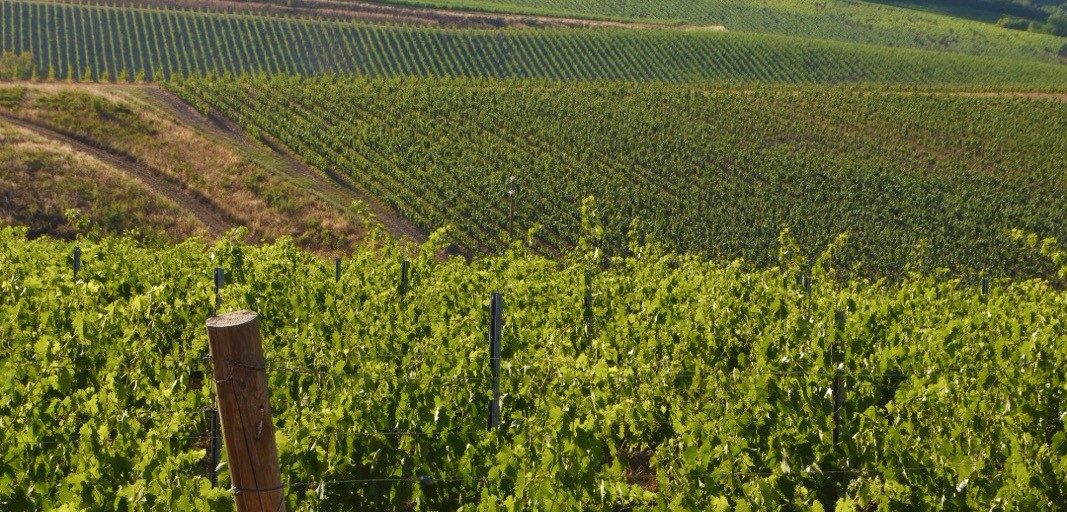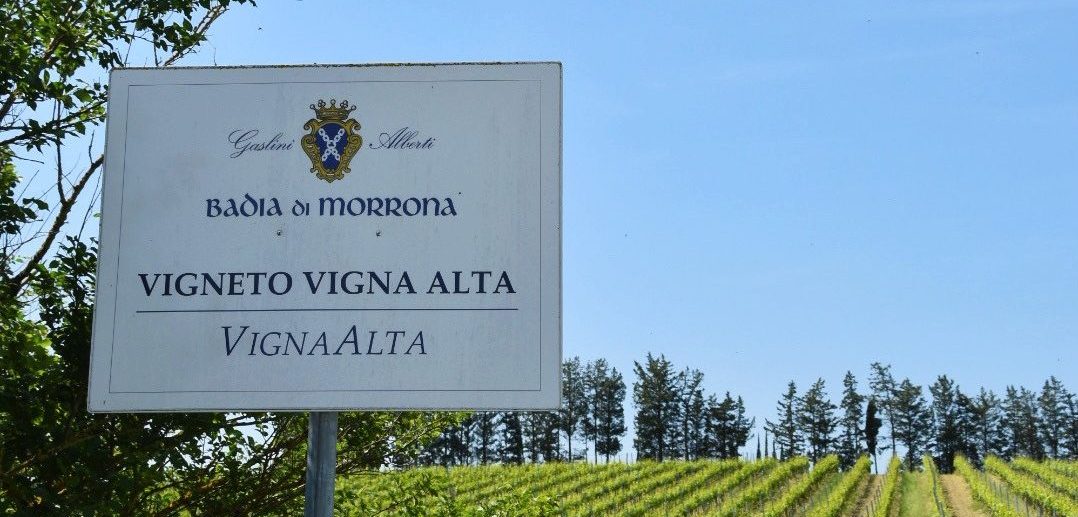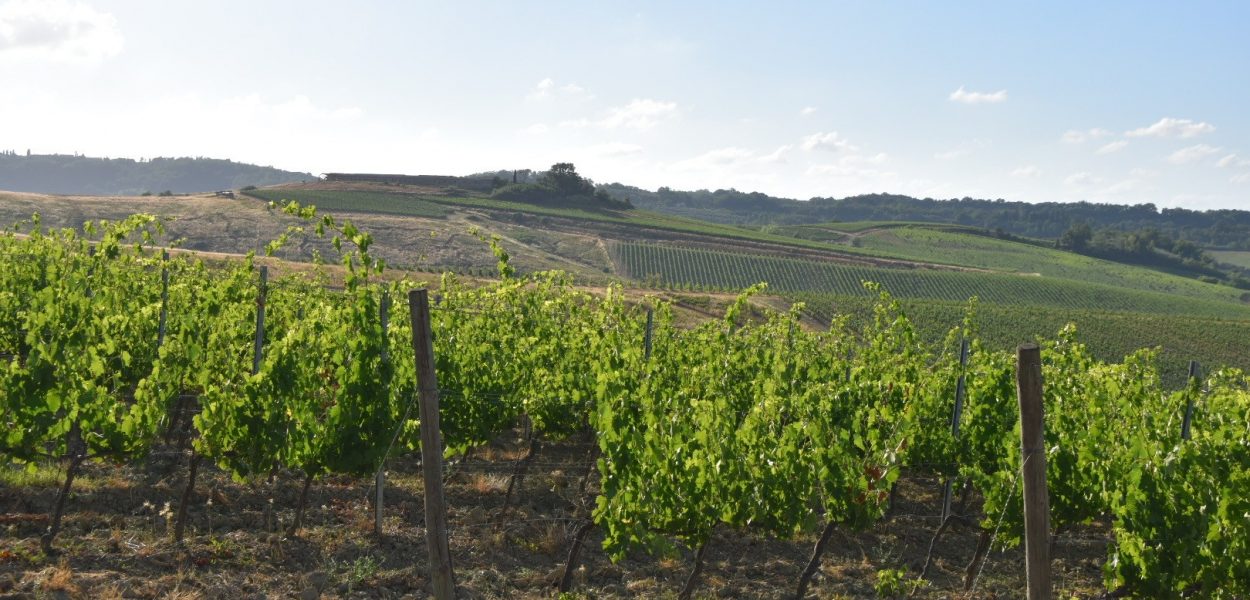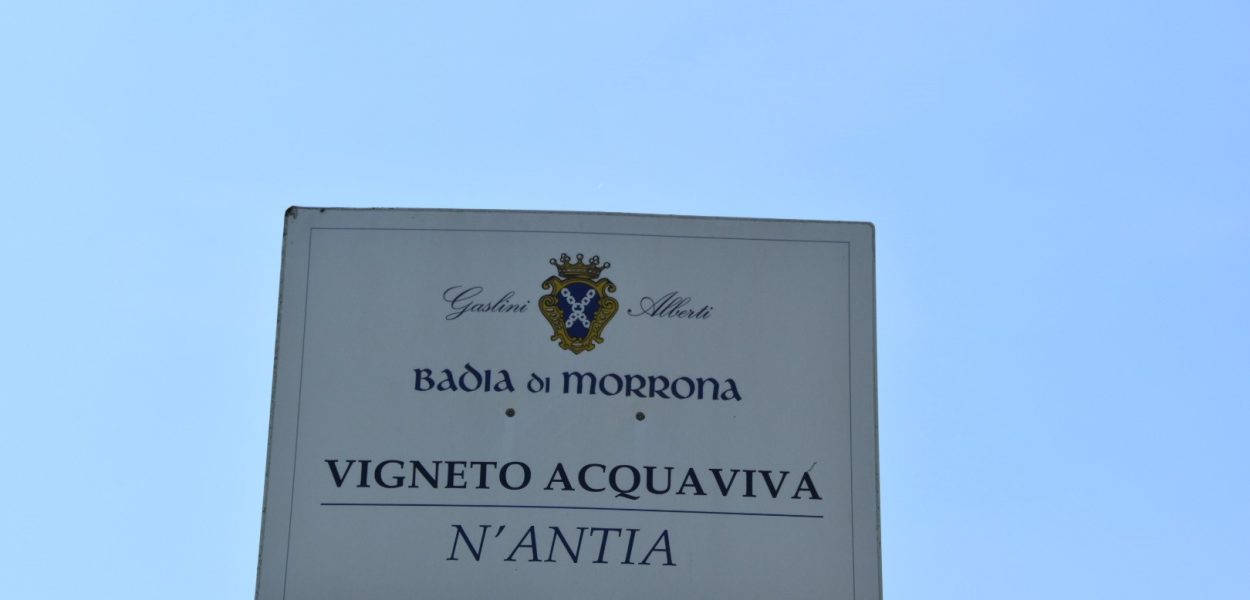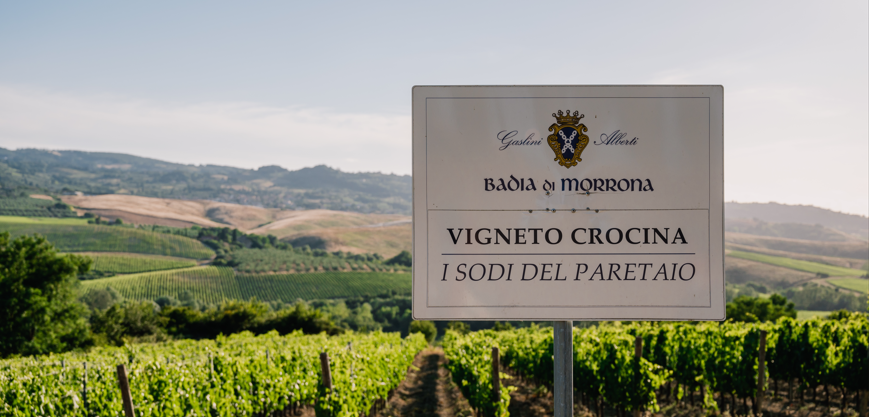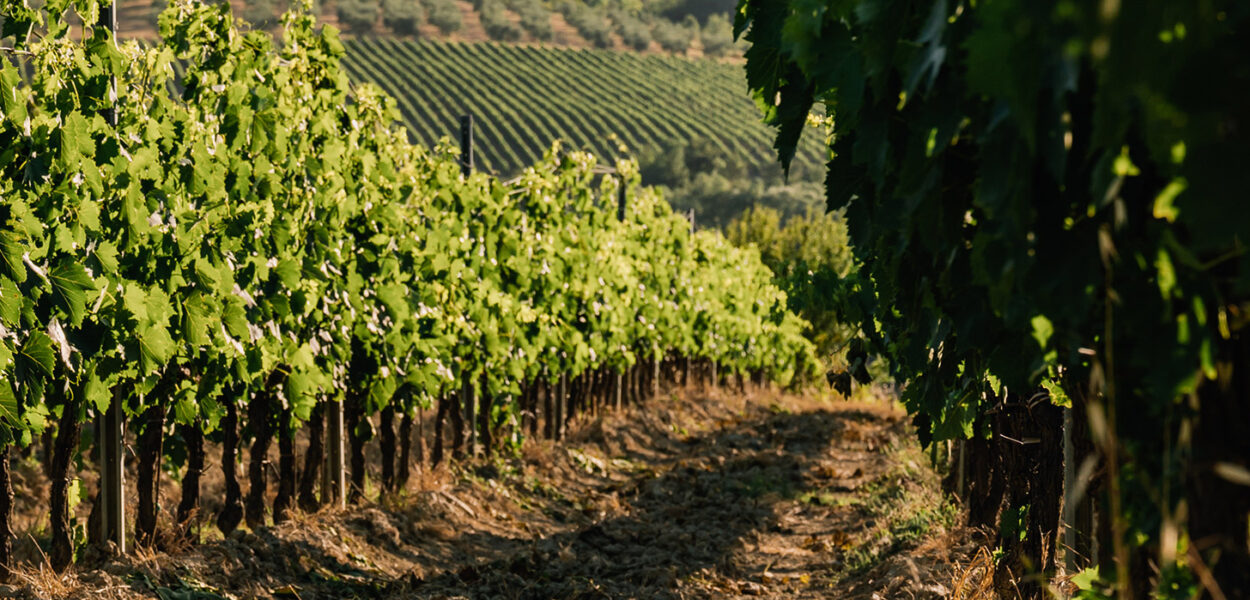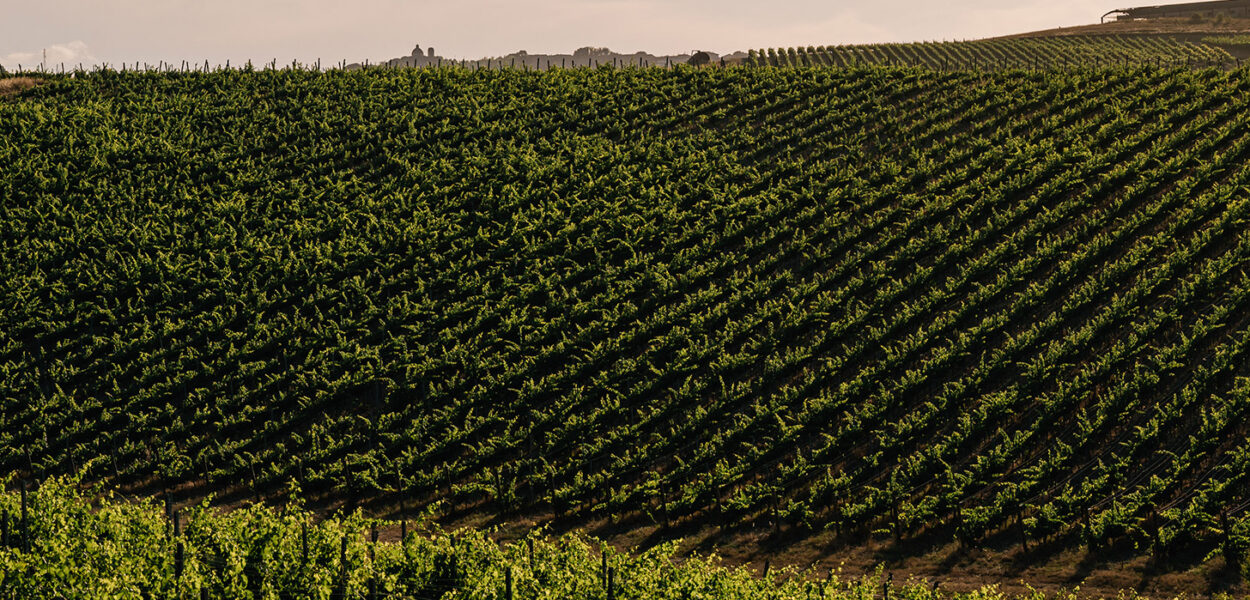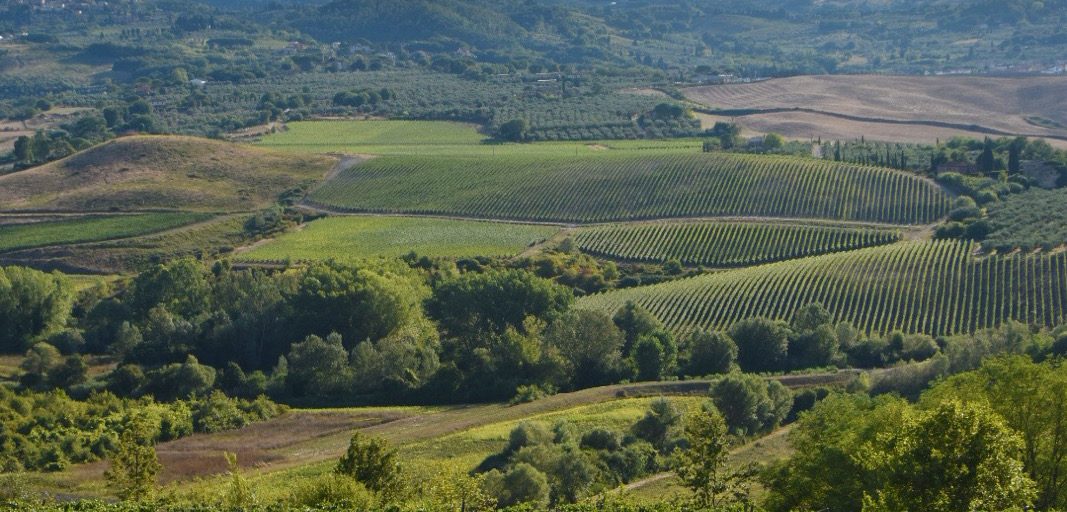Vineyards Badia di Morrona

Iconic Vineyards
The combination of various field research projects has led to the identification over time of vineyards which, thanks as well to their underlayment of diverse soils, each exhibit distinctive and remarkable personalities.
Vigna Disperato
The 10-hectare Vigna Disperato, sited on the east slope of the estate, is planted predominantly to Syrah. This vineyard, with its not-quite felicitous name, constantly amazes with the number and large size of sea-shells that continue to surface every time the ground is worked. The grapes here go to produce IGT Toscana Taneto.
N’Antìa vineyard
The singular N’Antìa cuvée owes its origins to a vineyard over 30 years old, one of the estate’s historic parcels and one with an extraordinary aptitude for interpreting the estate terroir with complexity and depth. This six-hectare vineyard produces Cabernet Sauvignon, Cabernet Franc, and Merlot from its clay- and travertine-rich soil. It faces southeast, right towards the ancient Badia di Morrona complex, the cellar where the grapes from this vineyard were initially vinified; hence, the special relationship today between monastery and vineyard.
Vignaalta vineyard
VignaAlta is a stupendous vineyard whose name suggests its position, atop the highest hill on the estate. Reached by a picturesque, white-coloured path, it covers some 8.5 hectares and lies in compact sand and fossil soils with significant content of white Marmettole di Carrara rock.Facing south are alternating parcels of Sangiovese, Cabernet Franc, Merlot and Canaiolo, with the finest clusters of the former variety dedicated to the production of Badia di Morrona’s much sought-after cru, VignaAlta Terre di Pisa DOC.
These three vineyards mark the cardinal points of the estate, with Vigna di N’Antìa lying at the far east and the vineyards VignaAlta and Disperato at the far west.
They serve to orient oneself over the broad expanse of Badia di Morrona’s vineyards, which count many other parcels, among them Vigna La Crocina, which yields the two well-known Chiantis, I Sodi del Paretaio, both standard and Riserva, as well as Vigne del Lago, along with Vermentino for the floral Felciaio white wine.
All these vineyards lie no more than 5 kilometres from the cellar, which was purposefully built in a strategic location to keep to a minimum the time needed to transport the just-harvested grapes.
They serve to orient oneself over the broad expanse of Badia di Morrona’s vineyards, which count many other parcels, among them Vigna La Crocina, which yields the two well-known Chiantis, I Sodi del Paretaio, both standard and Riserva, as well as Vigne del Lago, along with Vermentino for the floral Felciaio white wine.
All these vineyards lie no more than 5 kilometres from the cellar, which was purposefully built in a strategic location to keep to a minimum the time needed to transport the just-harvested grapes.

